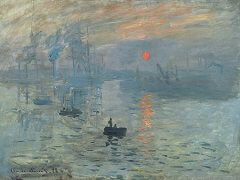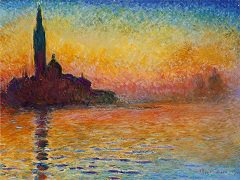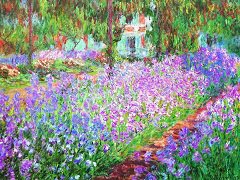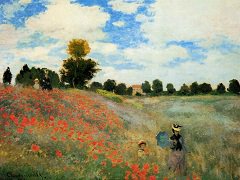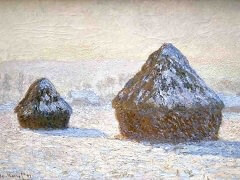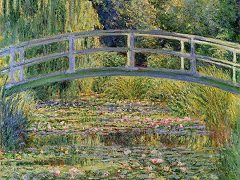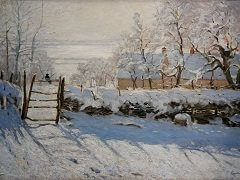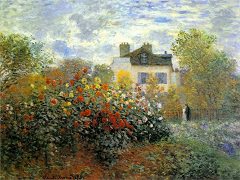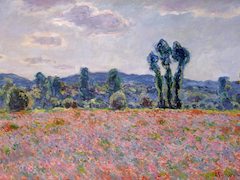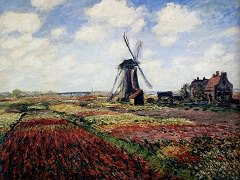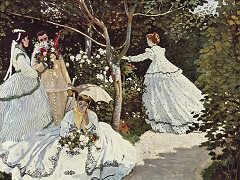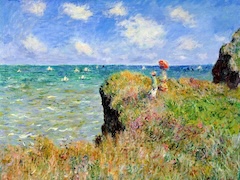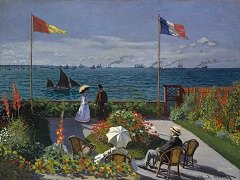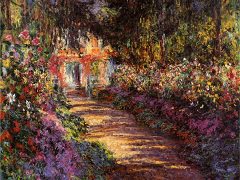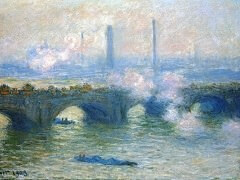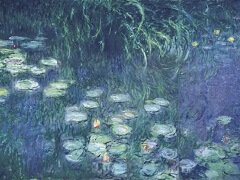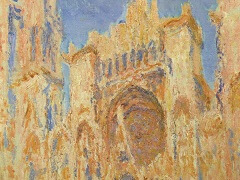View of Le Havre, 1873 - by Claude Monet
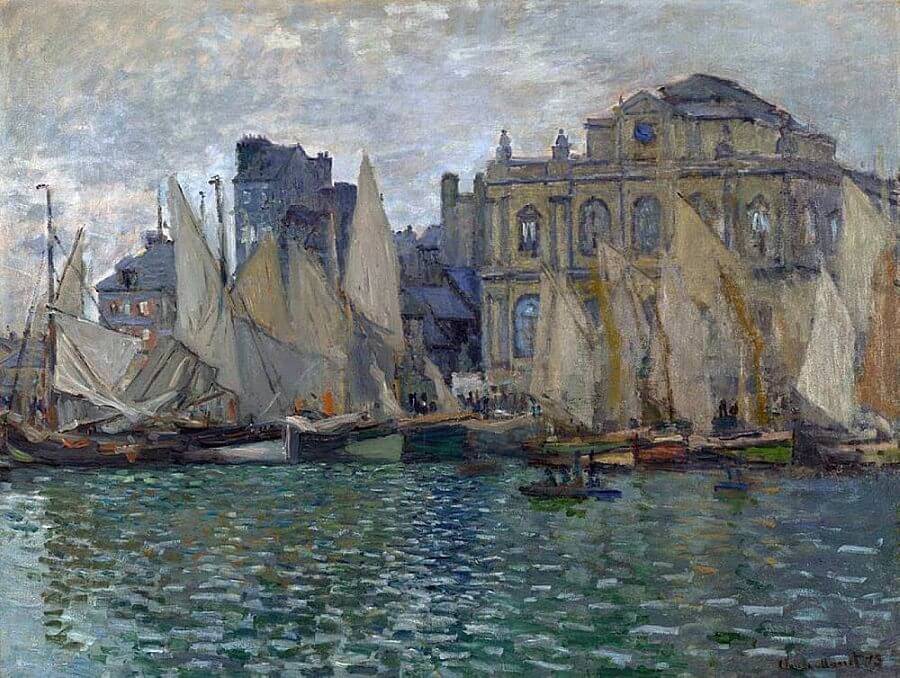
In 1873 Camille Pissorro referred to Monet's art as, "a highly conscious art, based upon observation, and on a completely new feeling; it is poetry through the harmony of pure colours, Monet adores real nature".
One of the most extraordinary aspects of Monet's painting was his ability to create intense light, especially that reflected on water, By the lime of View of Le Havre, Monet had developed his method of short, separate brushstrokes and achieved a complete unity of vision through a single technical device. Le Havre, Monet's childhood home, was a place that he painted often, Boats were a favourite motif, the wide expanse of sails creating an excellent plane for reflective light. Here Monet has depicted the buildings along the harbour at Le Havre with strong architectural details and has placed the viewer within the direct light that falls onto the canvas from the left. It was an unusual composition for Monet, who tended to depict his boats against an empty sky although the recurrent vertical theme of the masts and sails of the boats with the tall buildings is very effective,

